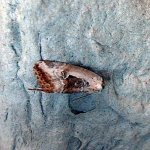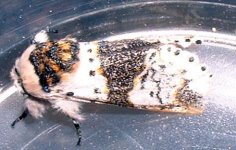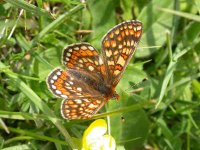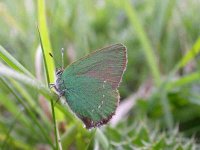harry eales
Ancient Entomologist
Ben Dickinson said:Just out of interest, someone further up said that moth catches this year have been universally down - are moths generally in some sort of decline?
Hello Ben,
Moth trapping produces various results depending on a large number of variables. E.g. Locality, type of habitat, air temperature, humidity, wind direction and wind speed, there may also be subtle changes in all of these factors which can alter the number of species and the totals of individual species caught.
No one can guarentee catching moths every night they trap. The type of trap used can also effect results. In my area the local council have recently replaced all the street lighting, and orange sodium bulbs now light my village. These have had an effect on the numbers of moths I catch in my garden. It's annoying at times to see very little in the way of moths coming to my MV trap when I can plainly see quite a number flying around the streetlights at the far end of my garden.
There has been some publicity on the Butterfly Conservation Web Site which mentions a decline in moth numbers in various parts of the British Isles. This data was obtained from the users of Rothamstead Moth Traps, who have, over a period of several years and in some cases decades, noted a decline in numbers of particular species being caught.
I for one am not at all surprised at that. Rothamstead Traps which are in a permanent position, operate every night of the year, and kill every insect entering the trap. Over a period of years or decades these traps are certainly likely to deplete the numbers of any local population. Admittedly, moths are mobile and do move around, but eventually less and less numbers of any particular species are caught.
Were these traps to be switched off for perhaps five years, and then put back into use, I would expect those species which had been reported in decline, to be far more common in each trapping area. I am fully aware that Rothamstead traps only 'sample' the local population where the trap is located. But, it's like a sample 'bite' out a sandwich, if you take enough sample bites, the sandwich is eventually gone. It's the same with moth populations, same principle and the same eventual result.
Most moths caught at light are males, every one captured in Rothamstead traps and killed off, means simply that females of that species in the vicinity are less likely to find a mate and sucessfully breed. The principle of exterminating males of 'Pest' species is practiced worldwide and there are many sites on the WWW that advertise traps to attract the males, although these are usually based on the female's pheremone.
Local populations do fluctuate for many reasons, some species disappear and are replaced by other not previously recorded. That's what makes recording so interesting, you never know what is going to turn up.
Harry










